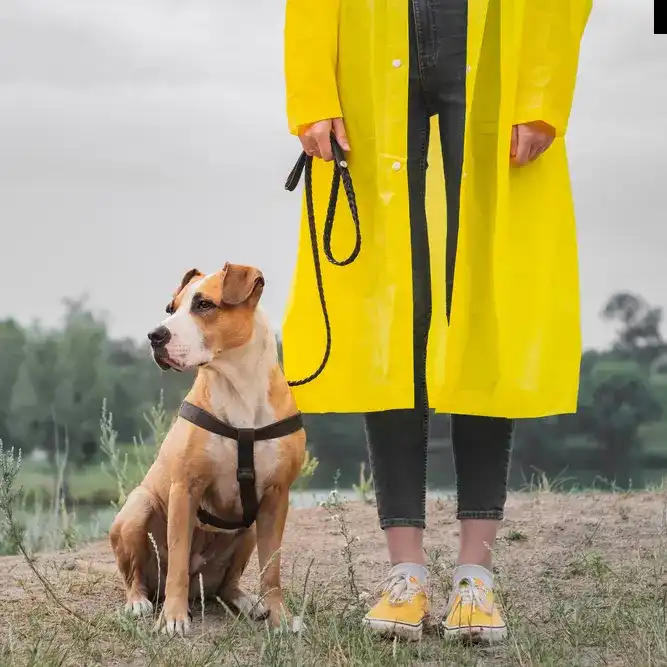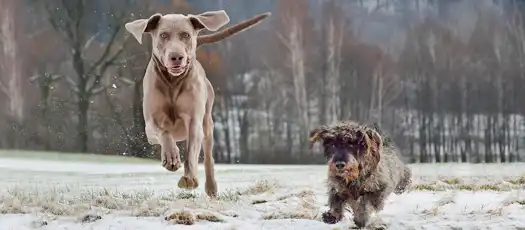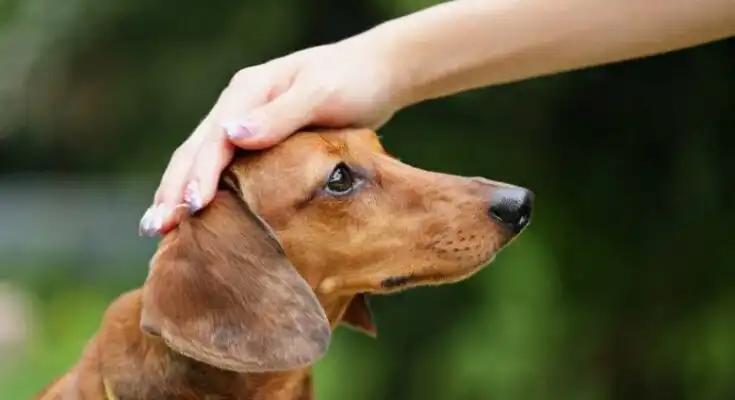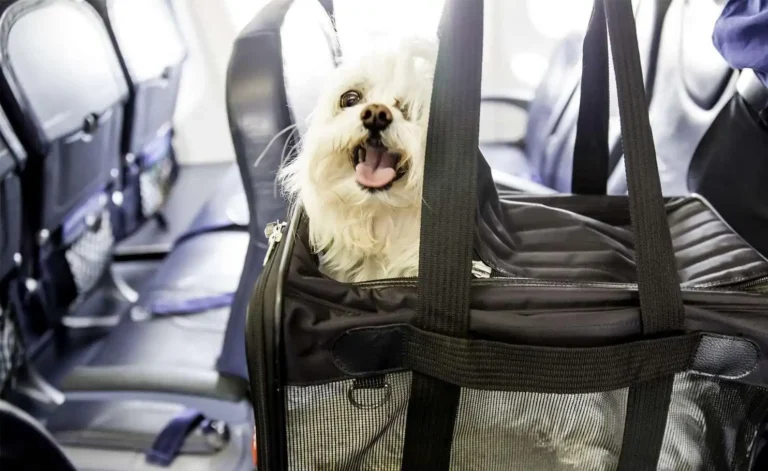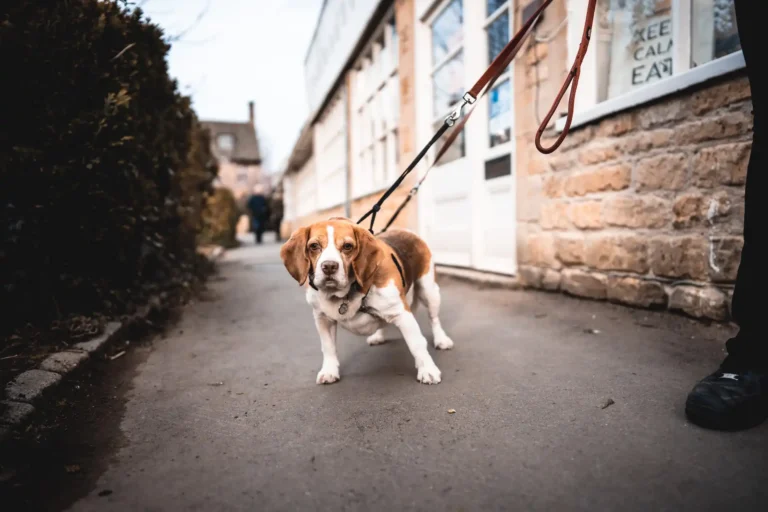How to potty train a shelter dog outside
One of the common problems that owners who adopt a dog from a shelter face is uncleanliness in the house. What to do in this situation and what to do if the dog does not get used to the toilet outside – we will talk about in the article.
Why do shelter dogs “go potty” in the house?
There may be several reasons why pets taken from a shelter prefer to relieve themselves right in the house, and it is not always easy to identify them. To do this, it is important to observe the dog’s behavior, take into account its health and the presence of a traumatic experience, analyze its daily routine and your own attitude towards the animal. The main possible reasons for uncleanliness are discussed below.
Young age
If you took a puppy from a shelter at the age of several months, most likely, it is simply not trained to use the toilet outside. Small pets are not able to control the urge to urinate and defecate: they relieve themselves immediately, as soon as they feel the need to do so.
Habit of uncleanliness
Many dogs spend months or even years in shelters before being adopted. They spend most of their time in confined spaces: enclosures or cages. Unfortunately, shelter staff and volunteers are physically unable to walk all of their charges every day. Therefore, animals are forced to defecate in the same places where they live, although this is not typical for them in their natural habitat.
Dogs are naturally clean and always choose a toilet place away from their den so as not to attract the attention of enemies. When this is not possible, they gradually get used to living and doing their natural needs in one place: it is difficult to get rid of such a habit in the future.
Incorrectly structured daily routine
In order for the dog to feel mentally and physically comfortable, it is necessary to choose the optimal daily routine for it. If the pet eats at the same time, then it will also need to go to the toilet at about the same time, which must be combined with walking. If the animal’s eating schedule is chaotic, then it will be impossible to predict its desire to go to the toilet: in this case, unpleasant “surprises” on the floor in the house will appear regularly.
Lack of socialization
Many shelter dogs are afraid to go outside due to insufficient socialization. When outside, they experience constant fear of cars, loud noises and unfamiliar smells, strangers, other animals, etc. In such a situation, they cannot relax and go to the toilet, and do so only in a calm, home environment.
Health problems
Often, the cause of uncleanliness in dogs is various diseases, the symptoms of which are polyuria (increased daily urine production, which is usually a consequence of polydipsia – increased thirst) and pollakiuria (frequent, painful urination with normal or reduced volume of urine output). Also, “puddles” or “piles” left at home may indicate urinary or fecal incontinence in a dog, which is most often of a neurological nature.
Marking the territory
Typically, male dogs mark unfamiliar territory by urinating on vertical surfaces. Females leave “marks” on the floor and scoop them up with their paws, thus spreading the scent.
Expression of submission
Some dogs urinate when they are emotionally charged: for example, when their owners come home from work in the evening and pay attention to them. This behavior is formed at an early age, when an adult mother dog stimulates urination in puppies by turning them over on their backs and licking their crotch with her tongue. The pets obey her, and in the future they behave the same way in front of other large and strong creatures (that is, in front of their owners), expressing their submission to them.
Small central habitat zone
Many small and decorative breed dogs perceive a rather limited part of space (for example, one of the rooms in the house) as their own place to live. Therefore, they do not see the difference between going to the toilet outside or in the next room, which they do not consider their territory.
How to teach a shelter dog to go to the toilet outside?
Finding the cause of dishonest behavior is only the first, but important step to solving the problem. Even if it is known in advance, it will take a lot of time and patience to achieve a positive result. We will tell you below what methods will help with this.
Clinical examination
First, make sure your pet is completely healthy. Take him to the vet, get the necessary tests and undergo the recommended examination if necessary.
Building a daily routine
Train your dog to eat at the same time. Until it gets used to going to the toilet outside, take it for a walk as often as possible. If the animal is afraid of the street, choose the quietest and most deserted places for walking, gradually increase the “area” of walking.
Physical activity helps stimulate the process of defecation: if the dog does not want to relieve itself at the beginning of the walk, play with it, do various exercises. Take water with you and give it to drink – this will help speed up urination.
A common mistake many owners make is to take their dog away from a walk immediately after it has gone to the toilet. If it enjoys walking and doesn’t want to go back, in the future it may begin to hold back its natural urges until it comes home.
Behavior control
If possible, monitor your dog’s behavior when he is at home. If he sits by the door, barks, whines, behaves restlessly, spins or sits down in some place – distract him with your voice, a command or a treat, and then immediately take him for a walk.
Do not scold or punish your pet for a “mistake” that has already been made. This will not help solve the problem, but may cause fear of going to the toilet in your presence due to fear of punishment, which will only make the situation worse.
Restriction of movement
As we have already noted above, dogs do not like to relieve themselves where they are constantly themselves. Therefore, to avoid uncleanliness in the house, buy a cage of the appropriate size for your pet (it should not be spacious or too tight), or tie it on a short leash. As soon as you notice signs that the dog wants to go to the toilet, take it outside.
Expansion of the central habitat zone
If your pet has found a favorite toilet spot right in the apartment, try to make it feel like its own territory. First, wash it thoroughly and remove the urine smell with special products. Then try to spend more time with the dog in this place, for example, playing.
Use these recommendations, be consistent and patient – and training your dog to go to the toilet outside will definitely be successful: then communication with it will bring you only pleasant emotions!
